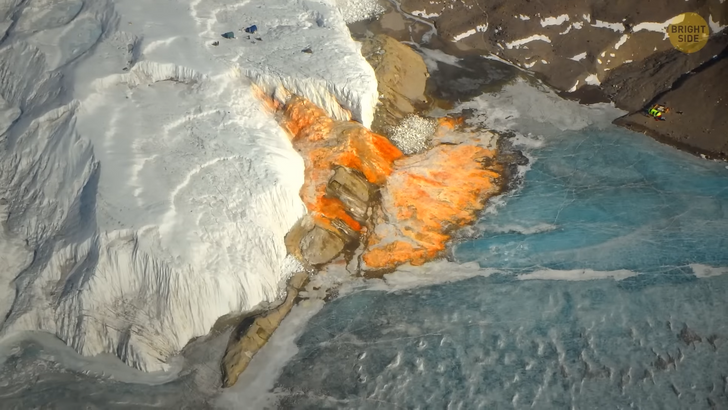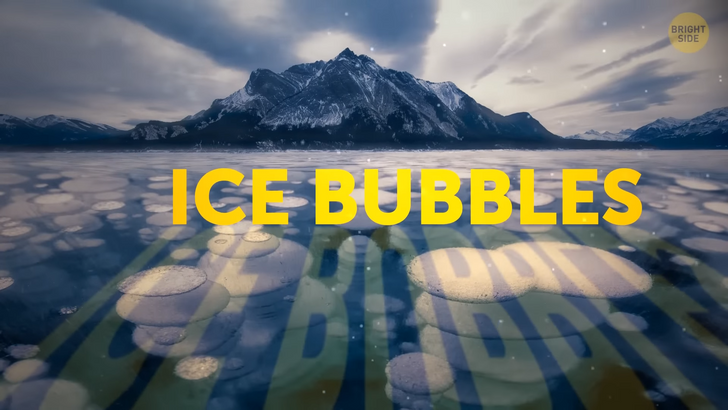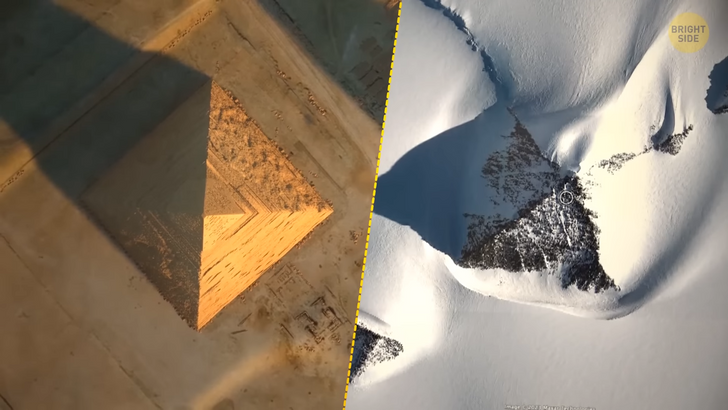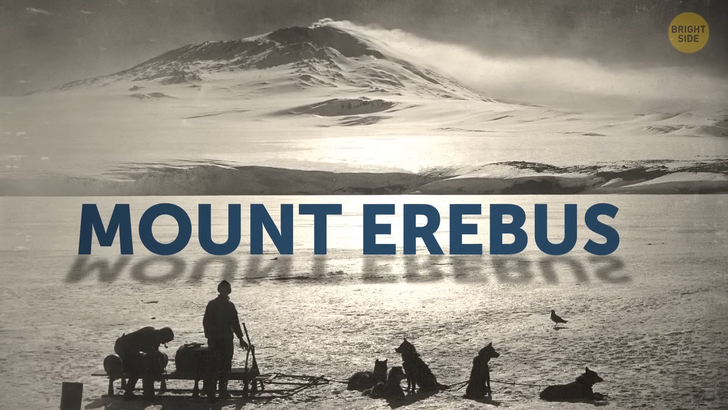Helen Hunt, 60, Stuns During Her Latest Appearance, and Her Lips Become the Center of Attention

Antarctica is the most remote continent on the planet. It has 90% of the world’s ice, but it’s considered a desert because the annual rainfall is only about 8 inches. You’d probably never think it was a desert if you look at it since it’s white and full of wildlife. But Antarctica is not only what it appears to be on the surface — there is so much hidden beneath it. And even above it.

Atlantis has long been a mystery for humankind. Did it ever exist? And if yes, where was it located? One of the theories supports that the Atlantean civilization could have thrived and flourished in the Antarctic continent when it was still uncovered by ice. Due to the Earth’s cyclical eras, that is the periods of Ice and Interglacial periods, it was believed that Antarctica was actually a tropical forest. And well, a recent Google Earth picture found some interesting ruins buried deep within a lakebed in the icy continent. It’s unclear to which civilization these remains belonged to. But some theorists believe that it could perfectly be Atlantis.
And these frozen Antarctic lakes are holding much more under them. In the 1970s, scientists were surprised to find large lakes under the ice plaques in the frozen continent. Over 400 lake beds are believed to exist under layers of ice. Lake Vostok, for instance, the largest subglacial lake over there, is buried beneath 2 miles of thick ice! There are pristine blue ice caves hidden there as well. The water in these lakes remains liquid due to the small levels of geothermal heat from the Earth’s core. And scientists believe that some lakes are around 15 million years old! Talk about the old days, huh?

Now, amongst the unique phenomena that occur in the continent, let’s say Antarctica is home to an extremely weird waterfall. The year was 1911 when an Australian geologist wondered about the so-called ‘blood falls’. He was extremely puzzled by this red stream of liquid pouring from a small hillside amongst the Antarctic ice. After years of studying, it was understood that what caused the redness was the high iron content in the water. The last piece of the puzzle came when scientists discovered that there was an underground lake with water full of oxidized iron nearby, which was what caused the blood fall to exist in the first place.
And speaking of puzzles, this image might be quite puzzling. After all, why on Earth would anyone need to take cash to Antarctica? Well, a little history first. Back in 1956, the US founded the McMurdo research station, which is the biggest science hub in the continent to date. At its peak, the McMurdo station hosts from 200 to 1,000 scientists. And these people need money to buy coffee, pizza, and other things to meet their daily needs. That’s when Wells Fargo decided to install an ATM there! Oh, and they even set a Guinness world record this way! The Wells Fargo ATM at McMurdo station is the most southern one in the world, and it’s the loneliest ATM in the world as well. As there isn’t another one for hundreds and hundreds of miles.

The freezing temperatures in Antarctica can make the continent hostile to human life. Actually, Antarctica is the coldest, driest and windiest continent on our planet. The average temperature along the coast is around 14 F, but as you head toward the Antarctic hinterlands, it gets even colder than that. The interior of the continent can register temperatures of around −71 F. On the bright side, these freezing conditions can account for some mesmerizing phenomena such as ice bubbles. These bubbles frozen inside some antarctic lakes are bubbles of methane gas. The gas released from the melting of glaciers ends up freezing mid-way and makes for a beautiful and exotic scene. I guess methane never looked this pretty before, did it?
A few years ago, scientists were taken aback by a giant hole the size of the Netherlands in one antarctic lake. For scale, that’s more or less the size of Lake Michigan. These holes are called polynyas, and they are a natural phenomenon in the continent, however this one is the biggest scientists have seen since the 1970s. So you’ll understand, polynyas are massive holes in a sea of ice. Most of them occur along the continent’s coast, but this new one was found in the Weddell sea, much farther from shore. Scientists are still trying to understand how that happened and what its implications are for the climate in the region.

There’s one feature in the continent that looks completely man-made and has even sparked several theories around the world regarding its origins. I mean, this formation looks exactly like other man-made pyramids, doesn’t it? The only difference is that this is actually a natural rock formation and has existed for a very long time. It was first found during an expedition in the 1910s and was kept a secret ever since. It was nicknamed “Pyramid” but its correct scientific name is “nunatak”, which is simply a peak of rock sticking out above a glacier or an ice sheet. There are other famous peaks that look pyramid-shaped, such as the Matterhorn in Switzerland. So no, this really isn’t a human construction. We are sure of it.
And the list of fascinating discoveries on the icy continent goes on. An artificial intelligence program was analyzing a set of data on Antarctica when it came across a stunning discovery. There may be up to 300,000 undiscovered meteorites to be found in the icy field of the continent. The truth is, meteorites have been falling on the continent for millions of years, but it was only 110 years ago that the first one was found. And guess what? Recently, researchers found a Martian meteorite in East Antarctica. It was the biggest one found in the last 25 years, and it weighed about 165 lbs.

Now, usually fire and ice are a rather tricky combination, so I’m guessing you wouldn’t say that Antarctica hosts an active volcano, right? But it does. The volcano, known as Mount Erebus is the southernmost active volcano in the world with liquid magma and lava boiling for eons. Actually, Mount Erebus has been active for over 1 million years, and it’s Antarctica’s second-highest volcano with a height of 12,000 ft.
We’ve mentioned before that Antarctica wasn’t always icy. But could you imagine a huge rainforest covering the entire continent? This isn’t science fiction, it was actually true. Leaf impressions and fossilized wood clearly show signs of tropical trees in the region. Fossil research has also revealed something magnificent: Antarctica is home to the oldest worm in the world. According to National Geographic, sperm fossils found in Antarctica reveal a long-extinct species of worm that is around 50 million years old. Scientists claim that this discovery is beyond important to studying some evolutionary relationships and say this was only possible due to the freezing of such samples for thousands of years!

Antarctica is a continent rich in biodiversity. Penguins, polar bears, and seals are just some of the animals we know that exist down there. But there is also a rare and fascinating species of fish that inhabits Antarctic waters. Popularly known as the see-through fish, this species is as bizarre as it is beautiful. This fish had to adapt to survive the cold water temperature in Antarctica, so much so that it evolved into a unique being. As well as a transparent body, this fish has transparent blood, making it completely see-through. This is because they lack the protein hemoglobin which gives blood its red color. Pretty neat, huh?
When you think of Antarctica you probably think of icebergs, right? So here are some fun facts about it. Did you know that icebergs have a lifespan of about 3000 years? And that together with Greenland, Antarctica is one of the world’s primary sources of icebergs. Icebergs can reach up to 600-700 ft below the surface of the water, and around 90% of an iceberg is hidden underwater — that’s where the expression “tip of the iceberg” is.











